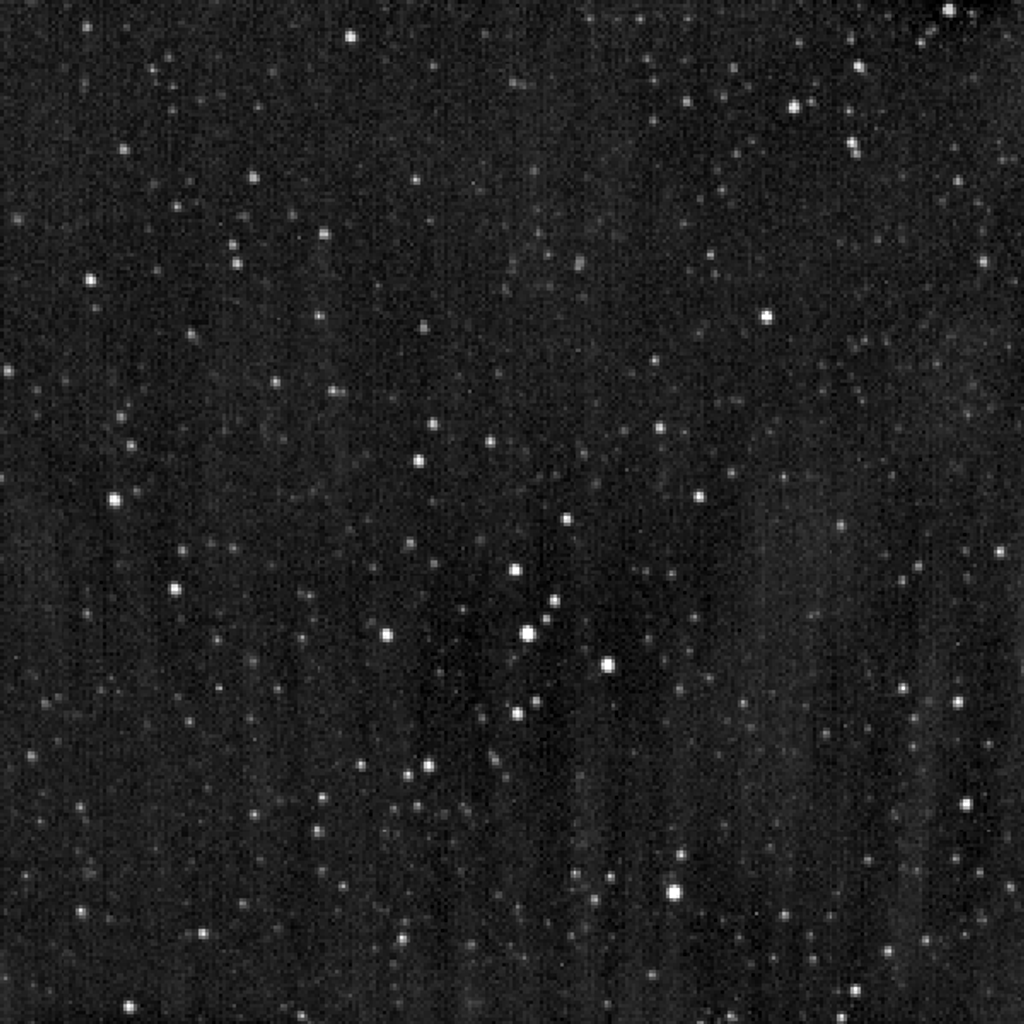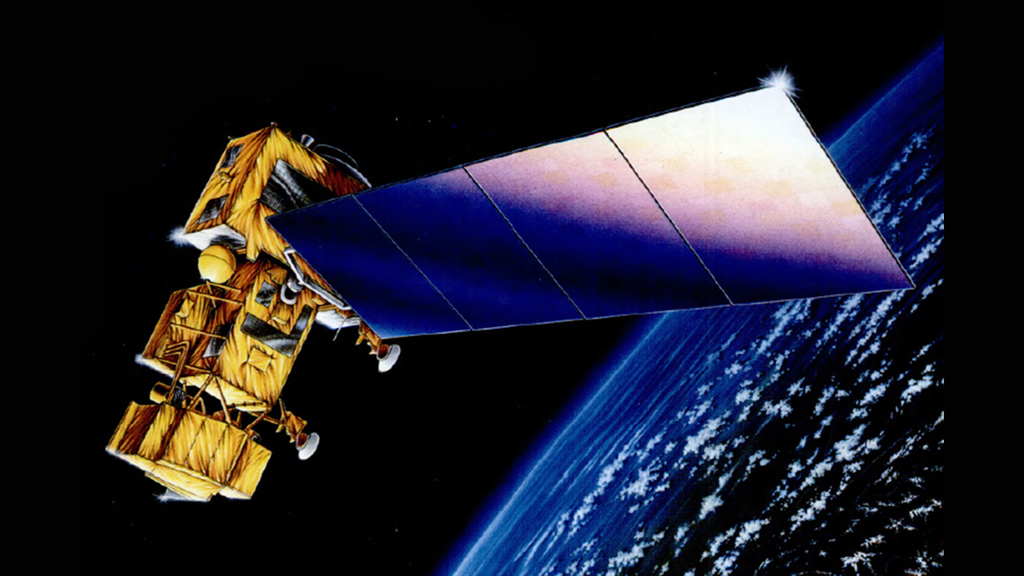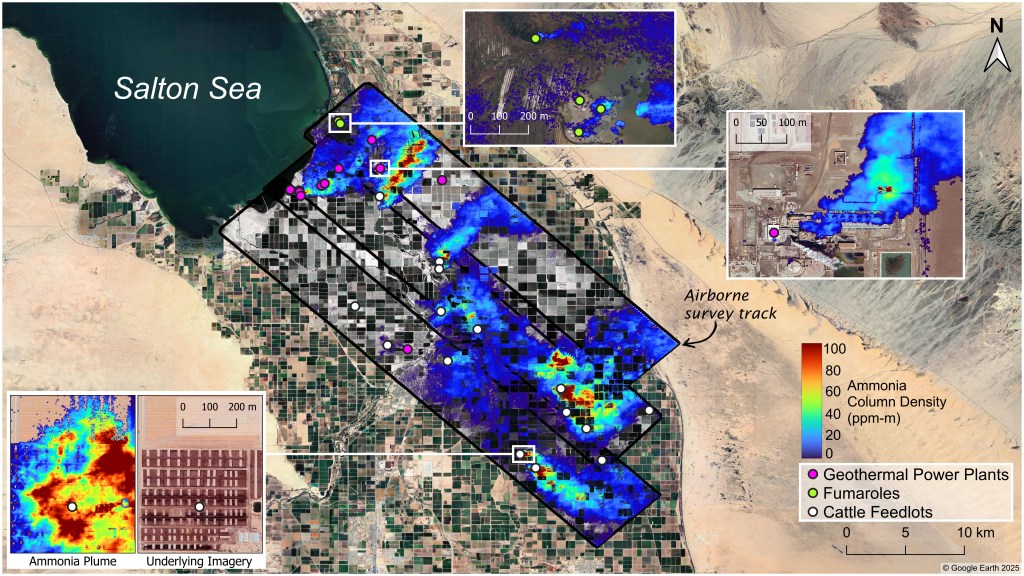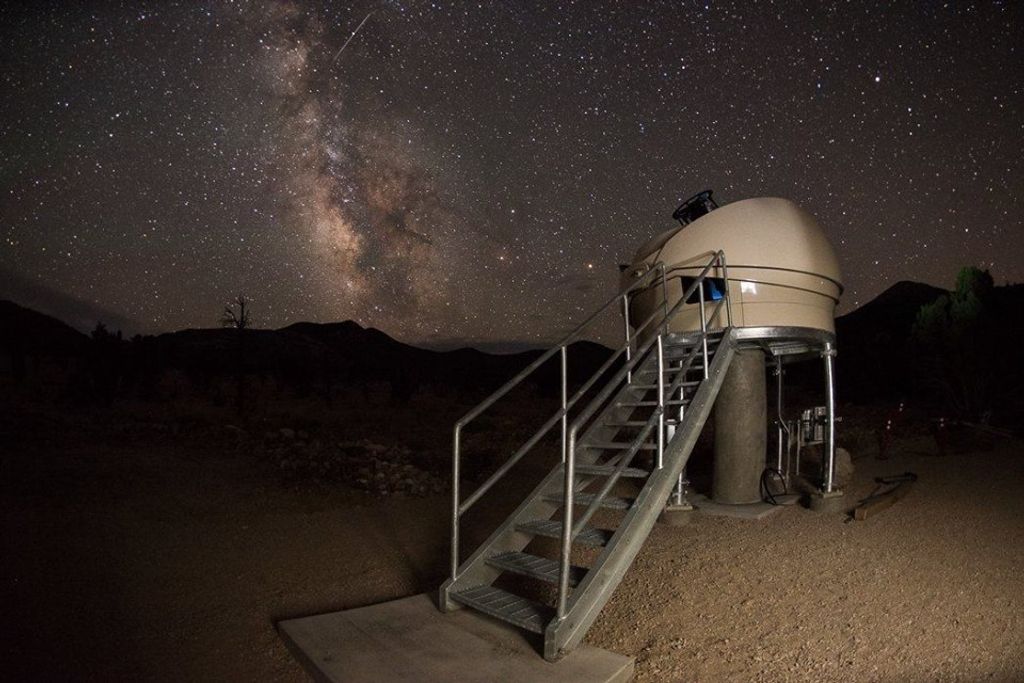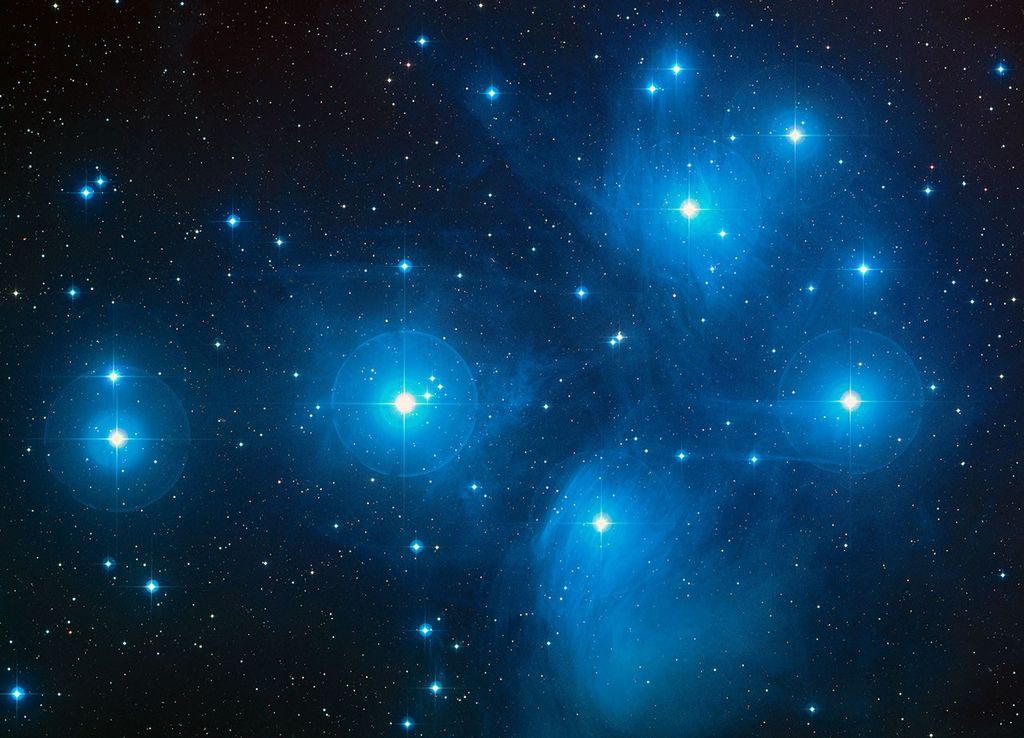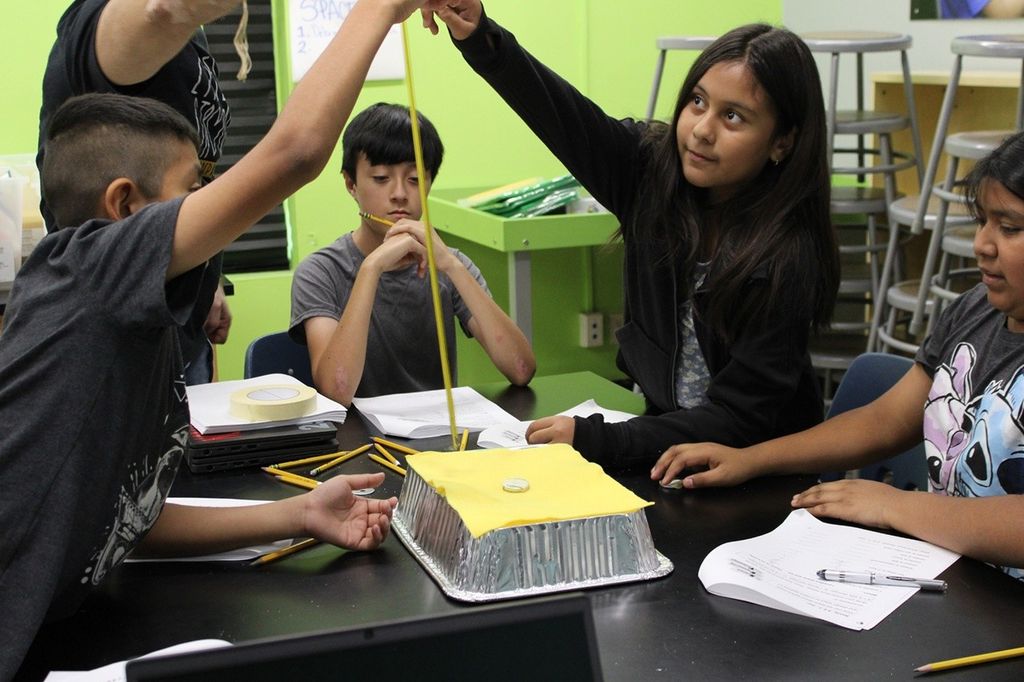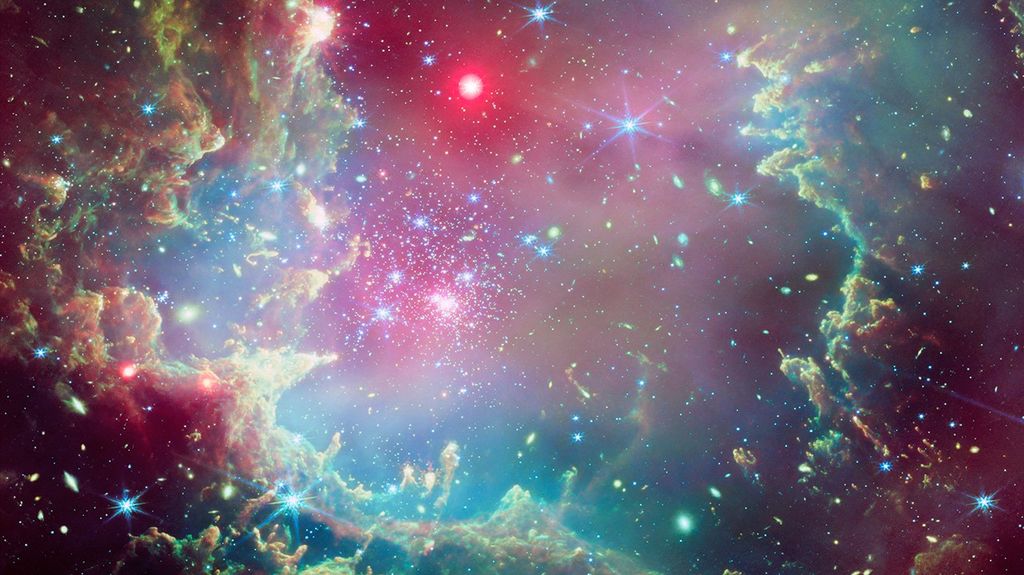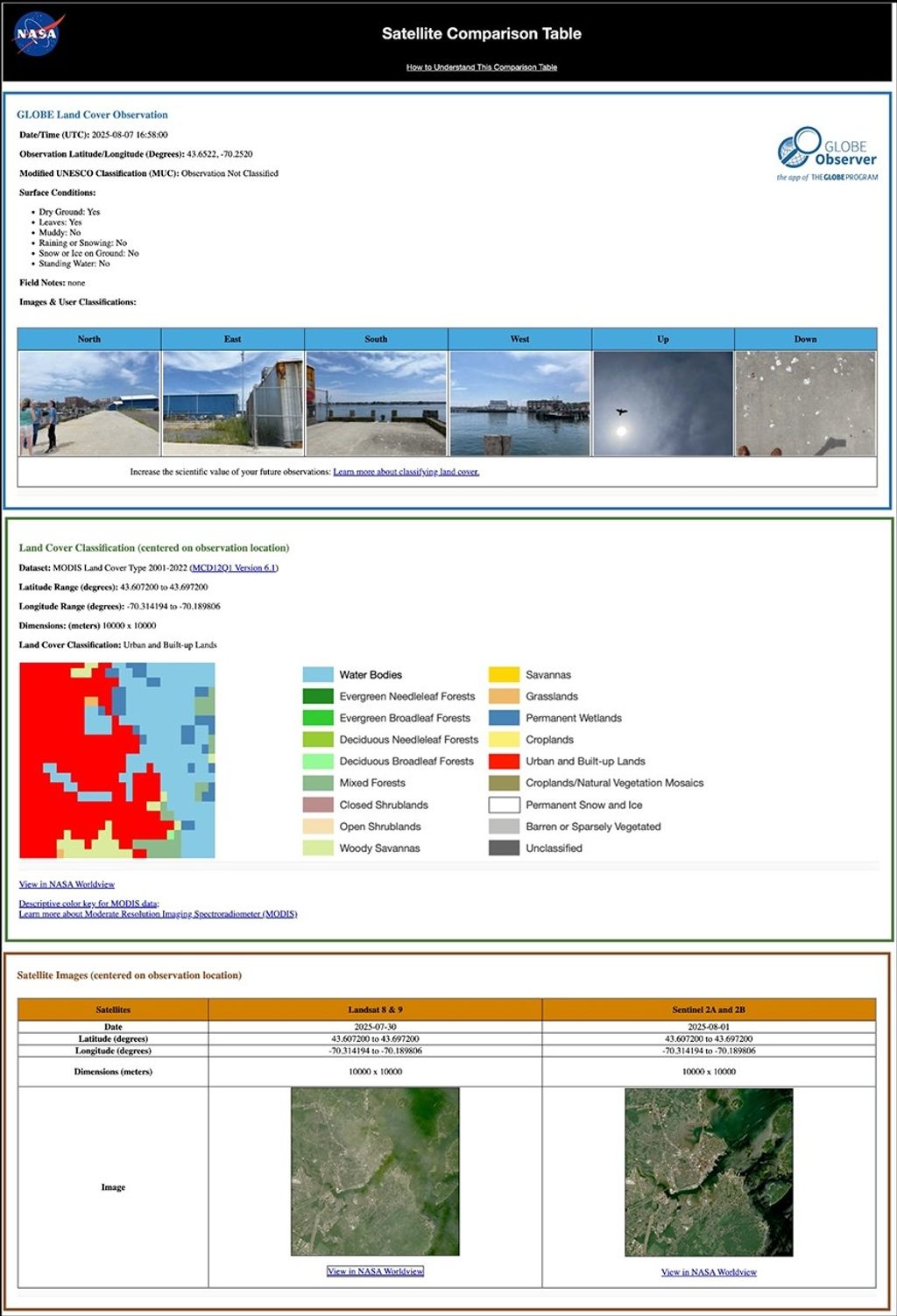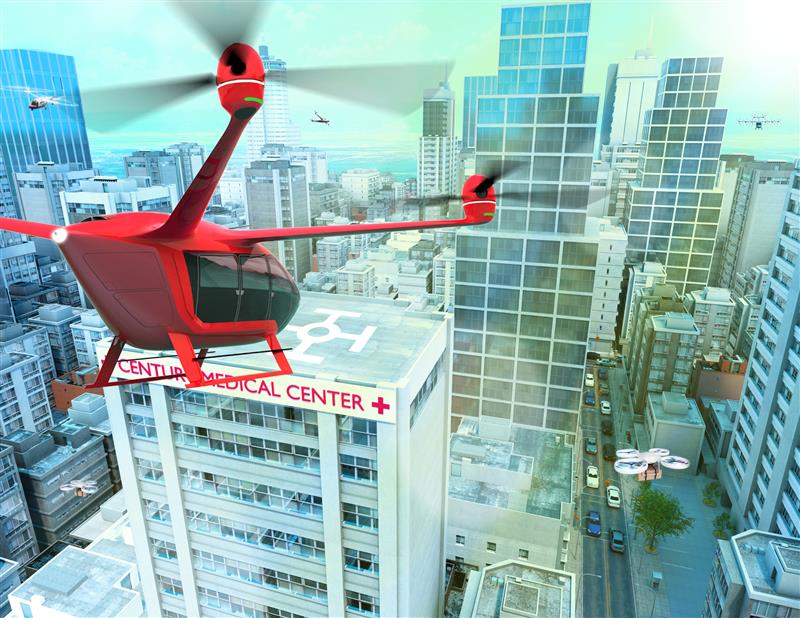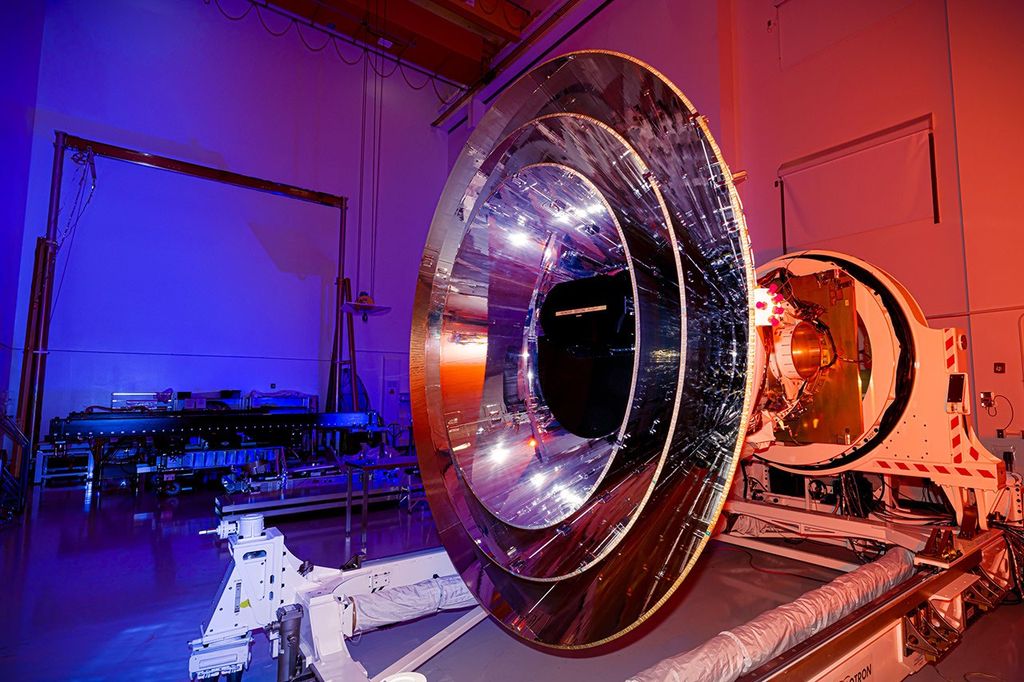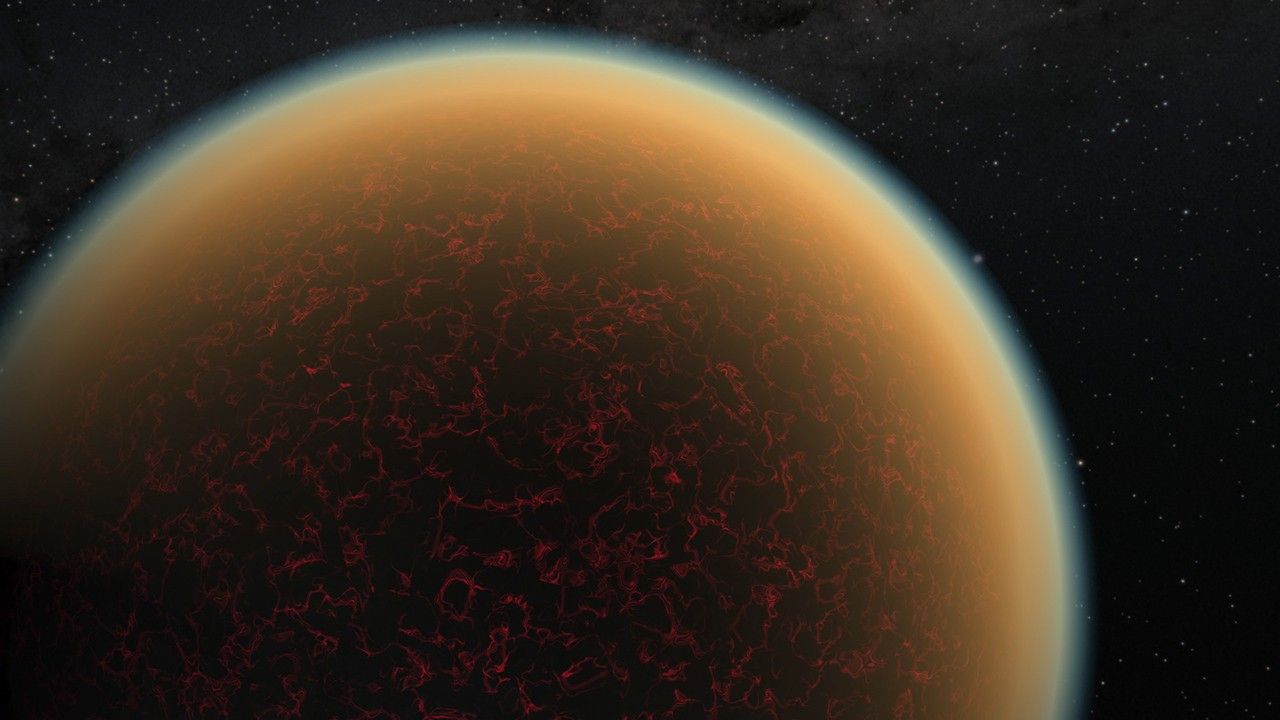1 min read
Artwork of Exoplanet GJ 1132 b

This is an artist's impression of the Earth-sized, rocky exoplanet GJ 1132 b, located 41 light-years away around a red dwarf star. Scientists using NASA's Hubble Space Telescope have found evidence this planet may have lost its original atmosphere but gained a second one that contains a toxic mix of hydrogen, methane and hydrogen cyanide. Hubble detected the "fingerprints" of these gases as the parent star's light filtered through the exoplanet's atmosphere. The planet is too far away and too dim to be photographed by Hubble. This illustrates what astronomers believe is going on at this remote world. Beneath the planet's smoggy, hazy atmosphere, there may be a thin crust only a few hundred feet thick. Molten lava beneath the surface continually oozes up through volcanic fissures. Gases seeping through these cracks seem to be constantly replenishing the atmosphere, which would otherwise be stripped away by blistering radiation from the planet's close-by star. The gravitational pull from another planet in the system likely fractures GJ 1132 b's surface to resemble a cracked eggshell. This is the first time a so-called "secondary atmosphere" has been detected on a planet outside of our solar system.
- Release DateMarch 11, 2021
- Science ReleaseDistant Planet May Be On Its Second Atmosphere, NASA’s Hubble Finds
- CreditNASA, ESA, Robert Hurt (Caltech/IPAC)
Related Images & Videos
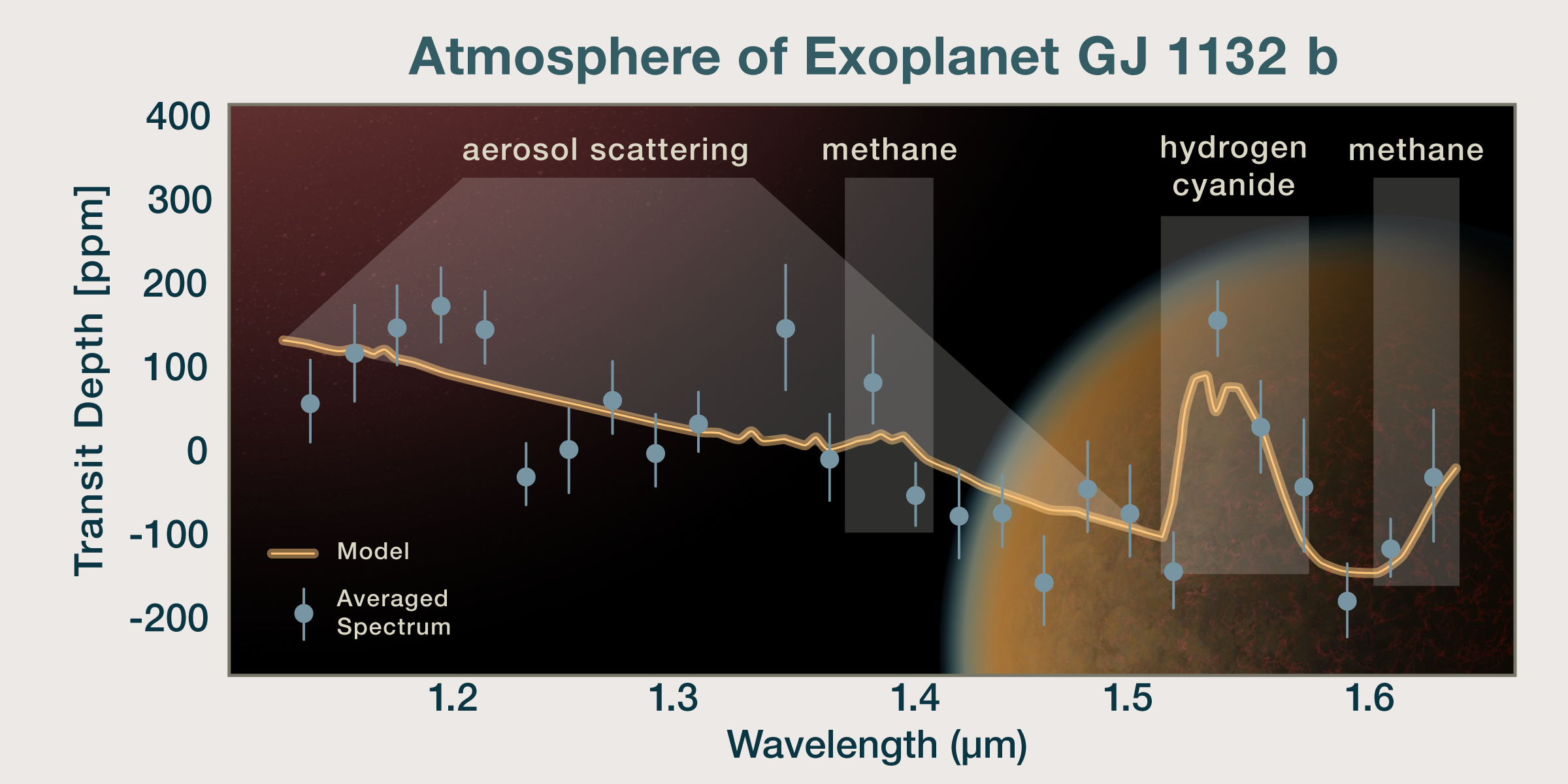
Spectrum of GJ 1132 b
This plot shows the spectrum of the atmosphere of an Earth-sized, rocky exoplanet, GJ 1132 b. The orange line represents the model spectrum. In comparison, the observed spectrum is shown as blue dots representing averaged data points, along with their error bars. This analysis...
Share
Details
Claire Andreoli
NASA’s Goddard Space Flight Center
Greenbelt, Maryland
claire.andreoli@nasa.gov






